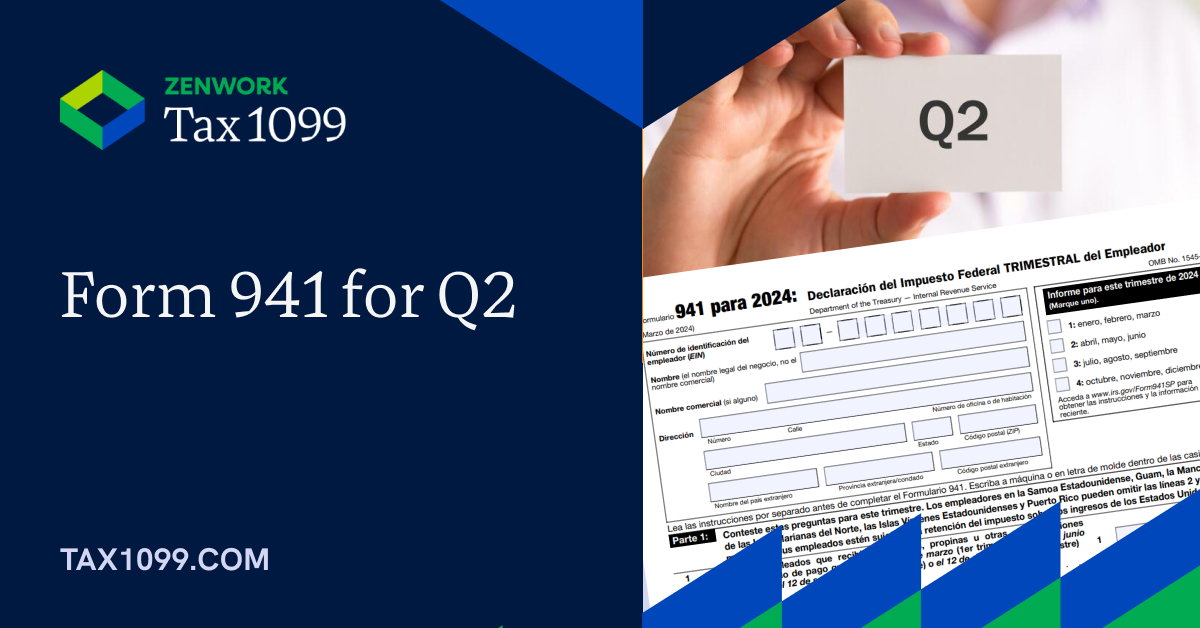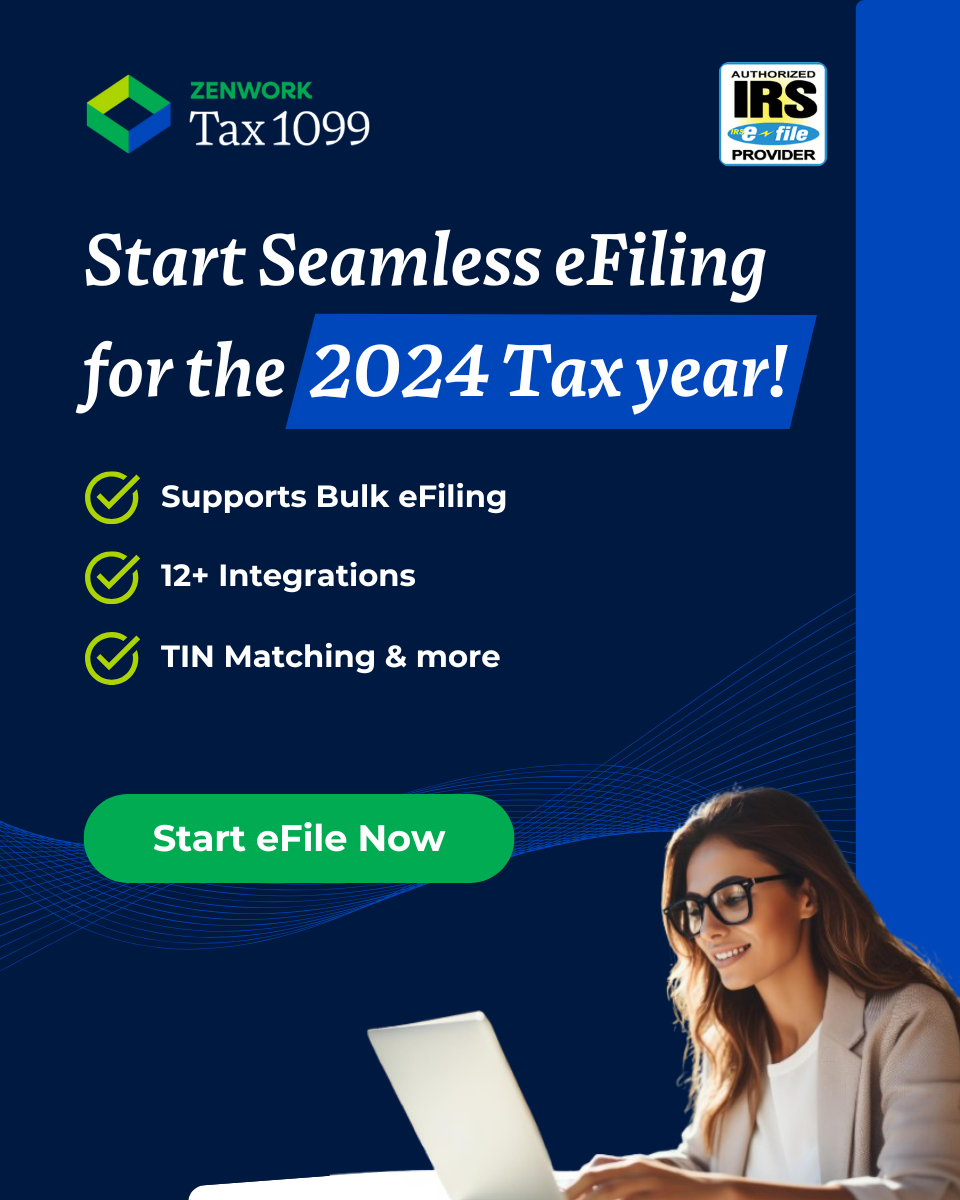for Overview:
Employers in the United States are required to file IRS Form 941, also referred to as the Employer Quarterly Tax Return. Form 941 is a crucial document used by US employers to file their federal income tax returns. New as well as experienced employers must adhere to federal tax regulations and file Form 941. It ensures proper documentation of employee wages, tax withholdings, and other payroll-related information, like Social Security and Medicare taxes.
Employers need to file Form 941 for the second quarter by the deadline of July 31, 2024. Understanding the filing process is crucial, and this write-up will provide everything you should know regarding Form 941 for Q2.
What is Form 941?
IRS Form 941, also known as Employer’s Quarterly Federal Tax Return, is an essential IRS document that employers in the United States must file it. This form is filed quarterly (4 quarters) with the Internal Revenue Service (IRS).
The deadlines for filing Form 941 for the year 2024 are as follows:
- First quarter (January – March): Due on April 30, 2024.
- Second Quarter (April – June): last date on July 31, 2024.
- Third Quarter (July – September): Due on October 31, 2024.
- Fourth Quarter (October – December): Deadline on January 31, 2025
Being a responsible employer, you must file this form quarterly for tax liability. As the deadline for Q2 is approaching, you should file it before it’s too late.
Who Needs to E-file Form 941 For Q2 in 2024?
Employers are not required to file it annually but in every quarter. Businesses without employees are still required to submit the reports. If you hire employees seasonally, employees for household work, and agricultural employees for your farm, you need to file a 941 form.
However, some employers may be exempt from filing, and these exceptions are clearly marked. .
Some common exemptions from filing Form 941 include:
- No Employees: If your business has no employees during a specific quarter, you may be exempt from filing Form 941 for that period.
- Seasonal or Agricultural Workers: Certain seasonal or agricultural employers are exempt if they meet specific criteria.
- Household Employers: If you only employ household workers (such as nannies or housekeepers) and meet certain conditions, you might be exempt.
Pivotal Changes for Filing Form 941 Electronically:
Starting in 2024, the IRS has significantly expanded the electronic filing mandate for organizations.
- Increased Social Security Wage Base: In 2024, the Social Security wage base limit has been raised to $168,600 from $160,200 for the first time. However, medical tax rates are unchanged.
- Taxes Applicable for Household Workers: Social security and Medicare taxes are applicable to those household workers who have earned compensation of $2,700 or more.
- Taxes Applicable for Election Workers: Election workers who receive $2,300 or more have to pay Social Security and Medicare taxes.
- Form Simplification: Forms 941-SS and Form 941-PR have been discontinued from TY 2024. The U.S. territory employers now can file Form 941 instead of those two forms. Form 941 ( sp) is now available in Spanish.
- COVID-19 Related Credits: The credit for qualified sick and family leave wages related to COVID-19 is limited to leave taken after March 31, 2020, and before October 1, 2021. It can no longer be claimed on Form 941.
Key Points to Keep in Mind Before Filing Form 941 for Q2:
Employers must pay close attention to some of the most notable details before filing Form 941 for quarter 2 and these are:
- Late filing of Form 941 can result in significant penalties. If you cross the deadline, a 5% penalty is imposed for each tax return, which can go up to 25% of total tax amount owed. IRS can also impose a heavy fine for late payments, or for payments that are not fully paid on time. Additionally, 2-15% of the unpaid tax can be charged based on the number of days the payment is overdue.
- All of the employers will be ecstatic to know that the IRS encourages electronic filing. has announced that it will give benefits for filing electronically and those benefits of eFiling is faster, error-free, and confirmed instantly.
- To ensure a secure process, the IRS requires an online signature PIN. It authenticates whether it is the same person or not. That’s why it is so safe to file tax returns.
- There have been doubts about the matter of no wages. Even if your business has not paid any wages during a specific quarter, you are still required to file IRS 941 form. Compliance with this directive ensures accurate reporting and adherence to tax regulations.
- The essential information which are required during the filing process are details of the business (Business Name, EIN, and Address), employment details (Number of Employees, Medicare and Social Security taxes, deposits made to the IRS, signing authority Information, and online signature PIN or Form 8453-EMP and deposit schedule and tax liability). You can get all these is assistance from the IRS-approved e-file provider Tax1099.
How to File Form 941 for Q2 with Tax1099?
As an employer, understanding your tax obligations is crucial. One form that often raises questions is IRS Form 941, the Employer’s Quarterly Federal Tax Return. Whether you’re a seasoned business owner or just starting out, Tax1099 will guide you through the eFiling process efficiently, step by step. Check the following steps, you have to cover while filing Form 941:
- Step 1: Sign up or log in to your account on tax1099 platform.
- Step 2: Under “Forms,” select “New Form”. Opt the current tax year (2024) and choose Form 941. Click the checkbox next to the employer’s name for whom you are filing. Click ‘Next’ and choose the quarter you are willing to fill. Enter all essential information in part 1, part 2 and part 3. If you want to authorize another person, check ‘YES’ in part 4, (third-party designee and provide the designee’s name, phone number, and any five digits the designee chooses as their personal identification number (PIN), otherwise select ‘NO’. At last, create or upload an electronic signature after completing Form 8453-EMP, Parts 1 and 2.
- Step 3: Carefully review the entire form and determine whether any necessary changes are required or not. Once everything is correct, submit Form 941.
Note: However, due to the impact of severe storms, straight-line winds, tornadoes, flooding, landslides, and mudslides that began on April 02, 2024, the deadline for filing Form 941 for Q2, 2024, has been extended. Taxpayers in these states now have until November 1, 2024, to submit their 941 forms.



